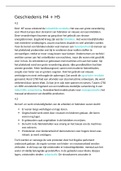Lecture 1 Composition
Composition = about order and hierarchy. The way you arrange place elements within a design
- On a flat surface (2D), in space (3D) and in time
Most media (message carriers) is two dimensional; what comes first
Third dimension (depth) is often just a suggestion (except virtual reality?); shadows
Time dimension is primarily visible in (suggestion of) movement
Good composition makes use of Gestalt laws like: figure-ground, simplicity, proximity, similarity etc.
Viewer deciphers (ontcijfert) image into visual elements
Viewer makes connections between visual elements
Gestalt = structuring elements all together as one whole (wood chair)
Factors determining composition
Shape of the surface on which the information is to be grouped (rectangle, either in portrait
or landscape format, circle, polygon, oval, etc.).
Visual elements and the ways they are grouped
Central composition
Elements are arranged so that they form a
recognizable shape, for example triangular
composition (is most common).
Traditional: classical effect (static boring effect);
it is symmetrical
Pattern composition
Creating order by placing images at the same distance apart, into a pattern
Modern, less formal effect by distributing elements less randomly over the page; more
dynamic
Symmetrical vs asymmetrical composition
Symmetrical:
Balanced, restful. Commanding effect when most important element is placed large and
central, surrounded by smaller, less important elements.
Asymmetrical:
Absence of symmetry creates tension: viewer looks for a reason for the asymmetry and is led
by the diagonal line (vector) that commands the composition.
Vectors indicate depth and movement (cf. “Vectors point the way”, p. 140).
Crop composition
Traditional/conventional method shows visual elements in their totality (using the golden
ratio)
Unconventional method, by showing only part of an object or by having objects moving out
of the frame. Less formal, more lifelike than central/symmetrical compositions
1
,Close up is about framing: medium shot etc. has to do with the distance between camera and
object
Cropping = taking some details, showing a part of the picture; you can crop a picture, specific thing of
a certain body. You can delete background elements
Frames and borders composition
Papers size, frame, boxes around figures limit the space…
… but space does not need to be determined by frames
Compositions with regular repetition of visual elements give the impression that the space in
the image continues beyond the frame
Corners billboard table
Movement composition
Comic strips are prime example of using visual means to suggest movement (with stripes and
clouds)
Photographer can create sense of movement by:
- Object blur: focusing on background and having moving objects pass in the foreground
- Time-lapse blur: using a slower shutter speed
- Background blur: following moving object with the camera
- Sports blur: making a flowing motion with the camera or only partly following the
moving object (background + object get blurred)
- Artificial movement blur: generally an inferior solution
Blur can also be added in Photoshop. Artificial blur is often inferior
Gestalt and composition
Comic strips are ordered in time. Reader fills in gap between two images.
Structure of comic strips can serve as example for other means of visual communication (film
and infographics) law of Gap-filling
McCloud (1993) Understanding Comics: The invisible art.
Classifies composition of transitions
Action action cause and effect
Moment moment serenity
Scene scene big transition in time/place
Subject subject narrative transition
Aspect aspect different aspects to create atmosphere
Non-sequitur absence of connection
Semiotics composition
Hierarchy determines what is important or not
For instance, through
- Sharp focus
- (Full) light
- Size (makes the most prominent thing larger)
- Distinctiveness
- Contrasting colour
Reader/viewer tends to seek relationship between elements from left to right
Past and present on the left, ‘the new’ on the right. Leads to fixed connotation
2
, - Left: origin, cause, past
- Right: results, consequence, future
Across cultures? According to Kress and van Leeuwen (1996) as a result of huge export
Western visual culture became dominant.
Top to bottom also reflects Western reading directions. However, connotation is different,
namely:
- Top: the ideal, the promise
- Bottom: the actual, the real
If a composition indicates a different reading direction, reader abandons left-right or top-
bottom strategy. Vectors encourage this (lines, arrows, a pointing hand, a face looking in a
certain direction, contrast of light and dark)
Reading in clockwise direction is also a main direction. Used in infographics, but also in
determining ordering of exhibitions in museum
Different distances according to Hall
Public – whole body without any distortion, more than 3.6 meters
Intimate – head, 45 cm or less
Close personal – head and shoulders
Far personal – to the hip
Close social – to the knee
Far social – whole person, with the body distorted as a result of perspective (legs are
particular foreshortened)
Vectors
One-sided vector: serve in complex environments as visual links (first, then)
Two-sided vector: connect two objects with one another
Neutral vectors: start from an actor, but don’t lead anywhere specific
Rhetoric composition
Composition is a means to achieve a rhetorical objective
Capture attention by focusing on what interest the public / arouses emotions.
Bridge between object and viewer
Devices such as repetition, visual rhyme, personification, contrast are important tools for
rhetorical compositions
Lecture 2 Typography
Typography (from Greek tupos [image/shape] and grapheia [writing]) deals with design of text,
usually with the goal of strengthening the text’s context.
‘Invention’ of printing (press) in Europe mid-15 th century:
Johannes Gutenberg in Mainz, Germany and around the same time Laurens Janszoon Coster in
Haarlem, the Netherlands
- Reproduction using print was already achieved two thousand years earlier in the China
by Cai Lun in 47 BCE.
Typography (chapter 8):
There is no accounting for taste. Or is there?
3











